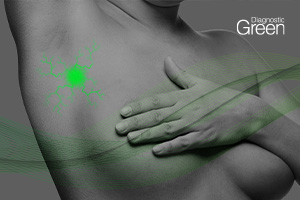Purpose: The skin and/or nipple-sparing approach has become an oncologically sound and desirable choice for women choosing mastectomy. Indocyanine green (ICG) perfusion imaging has been shown to reduce ischemic complications in mastectomy skin flaps. Immediate reconstruction requires a well-vascularized skin flap capable of tolerating full expansion. Identification of the perforating subcutaneous vessels to the skin envelope may allow for better and more consistent blood vessel preservation and flap perfusion.
Methods: The authors conducted an institutional review board-approved prospective study with 41 patients to assess the feasibility of using ICG perfusion imaging to visualize, cutaneously map, and preserve the vessels that supply the skin flap and nipple-areolar complex. For each patient, the number of vessels initially mapped, the number of vessels preserved, the extent to which each vessel was preserved, and the proportion of the flap with adequate perfusion (as defined by the SPY-Q > 20% threshold) was recorded and analyzed.
Results: Vessels were able to be identified and marked in a high majority of patients (90%). There was a moderate linear relationship between the number of vessels marked and the number preserved. Successful mapping of vessels was associated with lower rates of wound breakdown (p = 0.036). Mapping and preserving at least one vessel led to excellent flap perfusion (> 90%). No increase in complications was observed from utilizing ICG angiography preoperatively.
Conclusion: This prospective study using preoperative ICG perfusion mapping demonstrated safety, feasibility, and good prognostic outcomes.




